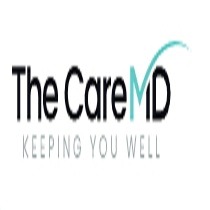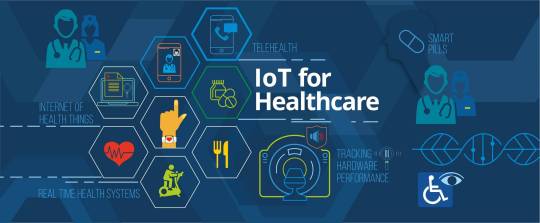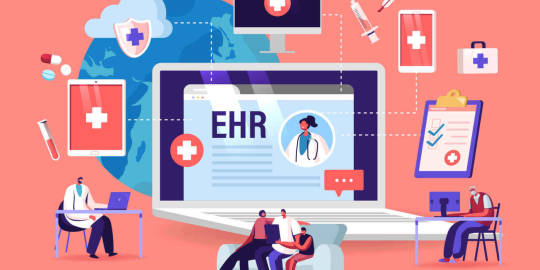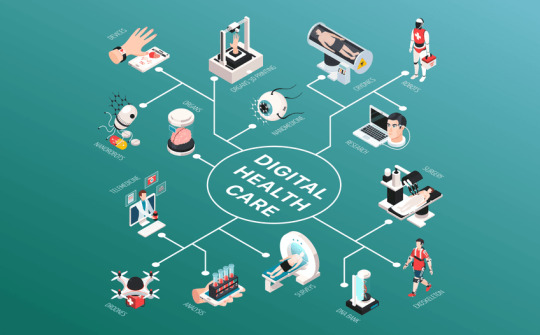#Telemedicine Health
Text
Conquer Mental Noise with Mindfulness Therapy
In the bustling cacophony of our modern lives, the mind often resembles a crowded marketplace, where thoughts, worries, and anxieties clamor for attention. This relentless mental noise can be overwhelming, leading to stress, anxiety, and a diminished sense of well-being. However, there is a powerful antidote to this chaos: Mindfulness Therapy. By embracing mindfulness, individuals can learn to quiet the mind, cultivate inner peace, and conquer the storm of mental noise that often disrupts their inner equilibrium.
#Therapy Platforms#Telemedicine Health#Secure Sessions#Flexible Scheduling#Web-Based Counseling#Emotional Wellness#Behavioral Telehealth
0 notes
Link
Tips for Submitting Effective Comments*
Overview
A comment can express simple support or dissent for a regulatory action. However, a constructive, information-rich comment that clearly communicates and supports its claims is more likely to have an impact on regulatory decision making.
These tips are meant to help the public submit comments that have an impact and help agency policy makers improve federal regulations.
Summary
Read and understand the regulatory document you are commenting on
Feel free to reach out to the agency with questions
Be concise but support your claims
Base your justification on sound reasoning, scientific evidence, and/or how you will be impacted
Address trade-offs and opposing views in your comment
There is no minimum or maximum length for an effective comment
The comment process is not a vote – one well supported comment is often more influential than a thousand form letters
Detailed Recommendations
Comment periods close at 11:59 eastern time on the date comments are due - begin work well before the deadline.
Attempt to fully understand each issue; if you have questions or do not understand a part of the regulatory document, you may ask for help from the agency contact listed in the document.
Note: Although the agency contact can answer your questions about the document's meaning, official comments must be submitted through the comment form.
Clearly identify the issues within the regulatory action on which you are commenting. If you are commenting on a particular word, phrase or sentence, provide the page number, column, and paragraph citation from the federal register document.
If a rule raises many issues, do not feel obligated to comment on every one – select those issues that concern and affect you the most and/or you understand the best.
Agencies often ask specific questions or raise issues in rulemaking proposals on subjects where they are actively looking for more information. While the agency will still accept comments on any part of the proposed regulation, please keep these questions and issues in mind while formulating your comment.
Although agencies receive and appreciate all comments, constructive comments (either positive or negative) are the most likely to have an influence.
If you disagree with a proposed action, suggest an alternative (including not regulating at all) and include an explanation and/or analysis of how the alternative might meet the same objective or be more effective.
The comment process is not a vote. The government is attempting to formulate the best policy, so when crafting a comment it is important that you adequately explain the reasoning behind your position.
Identify credentials and experience that may distinguish your comments from others. If you are commenting in an area in which you have relevant personal or professional experience (i.e., scientist, attorney, fisherman, businessman, etc.) say so.
Agency reviewers look for sound science and reasoning in the comments they receive. When possible, support your comment with substantive data, facts, and/or expert opinions. You may also provide personal experience in your comment, as may be appropriate. By supporting your arguments well you are more likely to influence the agency decision making.
Consider including examples of how the proposed rule would impact you negatively or positively.
Comments on the economic effects of rules that include quantitative and qualitative data are especially helpful.
Include the pros and cons and trade-offs of your position and explain them. Your position could consider other points of view, and respond to them with facts and sound reasoning.
If you are uploading more than one attachment to the comment web form, it is recommend that you use the following file titles:This standardized file naming convention will help agency reviewers distinguish your submitted attachments and aid in the comment review process.
Keep a copy of your comment in a separate file – this practice helps ensure that you will not lose your comment if you have a problem submitting it using the Regulations.gov web form.
Attachment1_<insert title of document>
Attachment2_<insert title of document>
Attachment3_<insert title of document>
Posted Comments
After submission, your comment will be processed by the agency and posted to Regulations.gov. At times, an agency may choose not to post a submitted comment. Reasons for not posting the comment can include:
The comment is part of a mass submission campaign or is a duplicate.
The comment is incomplete.
The comment is not related to the regulation.
The comment has been identified as spam.
The comment contains Personally Identifiable Information (PII) data.
The comment contains profanity or other inappropriate language.
The submitter requested the comment not be posted.
Form Letters
Organizations often encourage their members to submit form letters designed to address issues common to their membership. Organizations including industry associations, labor unions, and conservation groups sometimes use form letters to voice their opposition or support of a proposed rulemaking. Many in the public mistakenly believe that their submitted form letter constitutes a "vote" regarding the issues concerning them. Although public support or opposition may help guide important public policies, agencies make determinations for a proposed action based on sound reasoning and scientific evidence rather than a majority of votes. A single, well-supported comment may carry more weight than a thousand form letters.
* Throughout this document, the term "Comment" is used in place of the more technically accurate term "Public Submission" in order to make the recommendations easier to read and understand.
Disclaimer: This document is intended to serve as a guide; it is not intended and should not be considered as legal advice. Please seek counsel from a lawyer if you have legal questions or concerns.
@titleknown
2 notes
·
View notes
Text
Health in the Digital Age: Patient Experience
Have you ever wondered what the meanings of some of those complicated technical words were?
Have you ever questioned what those baffling technological jargons can do for you?
Here are just a few very basic definitions that should help you understand a few of those concepts and what the experience might mean to you.
First off, it is not necessary to understand the what, when, why, or how a specific device or program accomplishes its goals. Most of us are capable of surviving on a "need to know" basis. In other words, leave the technical stuff to the professionals in that field. You and your doctor can concentrate on getting the best possible results and patient experience.
Digital: This is a format and method for electronic technology, also known as a "digital language," that can create, process, and store data and information. This format/process, also known as a binary code, converts data into readable, alpha-numeric information.
This method of information input and processing is more precise, easily readable, quick, and retrievable, and helps to make better, faster decisions, leading to detailed diagnoses like identifying the illness and consequently more accurate prognoses (outcomes/treatment). In comparison to traditional paper storage, this method uses less space and is better able to safeguard your private and confidential information.
Digital - Online: This term refers to a person (human) or an object (electronic device) that is linked to or operates via the internet.
This makes it possible to access information much more quickly.
Platforms are more user-connected because they typically call for and encourage some level of individualized user communication and interaction.
Digital platforms include, for example, shopping sites like Amazon and eBay, medical offices or clinics, nonprofit organizations, directories, information, research, student education, banking, and more.
An Internet/Web browser, also known as a "browser," is a program that accesses and displays websites using a piece of computer software.
You can travel almost anywhere on the internet using a web browser. On your desktop, mobile device, or other electronic devices, it displays information that has been retrieved from other areas of the World Wide Web. Microsoft Edge, Internet Explorer, Google Chrome, Mozilla Firefox, Opera, and Apple Safari are a few examples of web browsers.
A website is a collection of various web pages with information on one or more subjects linked together under the same domain name, as opposed to a web page, which is a single document on the internet with a specific URL.
a web page: These rely more on information and don't demand private information or one-on-one communication like a platform.
Using a web browser, you can go almost anywhere online. It shows data that has been retrieved from other parts of the World Wide Web on your desktop, mobile device, or other electronic devices. Web browsers include Microsoft Edge, Internet Explorer, Google Chrome, Mozilla Firefox, Opera, and Apple Safari, to name a few.
In contrast to a web page, which is a single internet document with a unique URL, a website is a collection of different web pages with information on one or more subjects linked together under the same domain name.
a website: Instead of requiring personal information or one-on-one communication like a platform, these rely more on the information.
Perhaps using a word symbol or visual aid will make the examples below easier to understand: For instance, the icon or symbol for a text/word document is a blue square with the letter "W" on it; the icon or symbol for WhatsApp is a white phone in a green filled balloon; the icon or symbol for Google Mail is a multicolored "M," and so on. These are made to simplify life for those of us who are less technologically savvy.
Hardware describes a computer's actual physical components. The central processing unit (CPU), also known as the computer's brain, hard drives, USB ports, keyboards, monitors, motherboards, and mice are examples of hardware components. The work is actually done by the hardware. Since the 1960s, hardware has undergone constant improvement, going from heavy, clunky devices to light-weight, portable modern digital gadgets like laptop computers, smartphones, medical equipment, tablets, etc. One of the key factors boosting the demand for technology devices is user-friendliness.
The term "software" describes the applications and other operating data that run on a computer. written originally in a digital (binary) format by computer programmers and used to provide instructions to the hardware of the computers. Applications, programs, and scripts that run on an electronic digital device are generally referred to as software. These instructions govern the work that the computer performs. Once more, user-friendly apps, programs, etc. are a major force behind the development of electronic devices for human use.
In terms of computers, a device is primarily defined as machinery with electronic or digital capabilities. The majority of us are familiar with these gadgets as computers, laptops, smartphones, watches, tablets, etc. Modern medical technology is one of those future paths that is constantly being explored, and the list gets longer and longer with every decade (or less) as the demand for modern technology rises in every aspect of our contemporary world.
Applications (abbreviated as "apps") are primarily made for the digital electronic devices mentioned in item #12 above. An app is a software program that can be downloaded to your devices and is paperless.
The user has a variety of options thanks to these apps. everything from games to studying languages, research, education at all levels, healthcare services, booking hotels, flights, and other travel arrangements, to communication and banking. An "app" has no restrictions on what it can do.
Technology today is similar to riding a bike or driving a car. It is not necessary to know how to make or repair it, but once you get the hang of using it, you will be enjoying a brand-new experience.
We hope that the terms mentioned above will increase your knowledge.
Our products are user-friendly, with simple-to-follow instructions and a logical flow of steps from one to the next. If you would like more information about how RioMed Ltd. can help you create a great patient experience, please get in touch with us or visit our website.
#Digital Healthcare#digital health#Healthcare#Health Care#online doctor consultation#online healthcare#Online doctor appointment#online doctor#electronic health records#website#electronic medical records#Telemedicine#Telemedicine Software#cellma#riomed#Healthcare IT#healthcare information#Hospital Information System#information technology
3 notes
·
View notes
Text
The CareMD is a telemedicine platform to help patients to engage with the best medical care providers for all health conditions & STD treatment online.

3 notes
·
View notes
Text
Telemedicine is a significant and rapidly expanding factor of healthcare delivery in the United States. Currently, the US has 3,500 service site across 200 telemedicine systems. Telemedicine enables medical professionals to assess, identify, and treat patients from a distance using telecommunications technology. Telemedicine provides the opportunity to connect virtually for doctors and patients whenever and wherever they need to. The method has undergone a startling evolution in the past ten years and is now playing a more prominent role in the American healthcare system.
#healthcare#medical billing#health#medical#revenue cycle management#telemedicine#digital health#patients#treatment#virtually#american
2 notes
·
View notes
Link
#egypt#vezeeta#health tech#africa#pharmacy#epharmacy#online pharmacy#digital health#telehealth#telemedicine#medtech
1 note
·
View note
Text
Online Homeopathic Treatment for 100+ Diseases and Get Medicine through Courier.
Whatsapp/Call #9406518290

#healthblr#nutrition#healthy eating#marketing#health & fitness#homeopathy#father#fathers day#online#consulting#homoeopathy#business#telemedicine
2 notes
·
View notes
Text
Happy Peeps: Bringing Comfort to Your Screen with Telehealth Counselling!
Happy Peeps is your go-to destination for Telehealth Counselling, offering accessible and convenient therapy services from the comfort of your own home. With our secure and confidential video conferencing platform, you can connect with our experienced therapists anytime, anywhere across Australia. Whether you're dealing with anxiety, depression, relationship issues, or any other mental health concern, our compassionate team is here to support you on your journey to well-being.

Through Telehealth Counselling, you can receive personalized therapy sessions tailored to your unique needs and preferences. Our therapists provide a safe and non-judgmental space for you to explore your thoughts, emotions, and challenges. With the flexibility of Telehealth, scheduling appointments is easier than ever, allowing you to prioritize your mental health without disrupting your busy schedule.
#telehealth counselling australia#telehealth#telemedicine#healthcare#mentalhealth#health#teletherapy#therapy#wellness#digitalhealth#counseling
0 notes
Text
Embracing Innovation: Technology's Role in Modern Healthcare

In today's rapidly evolving healthcare landscape, the concept of Embracing Technology has become more than just a trend—it's a necessity. As healthcare providers strive to deliver optimal care and improve patient outcomes, the integration of cutting-edge technologies has emerged as a pivotal solution. In this blog post, we'll explore how various technological advancements, from Electronic Health Records (EHR) to Telemedicine, are revolutionizing the way healthcare is delivered and experienced.
Electronic Health Records (EHR) have transformed the way medical information is stored, accessed, and shared. By digitizing patient records, healthcare providers can streamline administrative processes, enhance communication between care teams, and ultimately improve the quality of patient care. With the click of a button, healthcare professionals can access comprehensive patient histories, medication lists, and diagnostic reports, enabling more informed decision-making and personalized treatment plans.

Telemedicine represents another groundbreaking innovation in modern healthcare. Through the use of telecommunications technology, patients can now access medical care remotely, breaking down barriers to healthcare access and improving convenience for both patients and providers. Whether it's a virtual consultation with a primary care physician or a remote monitoring session for chronic disease management, telemedicine offers unparalleled flexibility and accessibility in healthcare delivery.
Medical Imaging Systems have also played a crucial role in advancing diagnostic capabilities and improving patient care. From high-resolution X-rays to sophisticated MRI machines, these imaging technologies provide healthcare providers with detailed insights into patients' internal structures and conditions, facilitating accurate diagnoses and treatment planning. With the latest advancements in medical imaging, healthcare professionals can detect abnormalities earlier, leading to better outcomes and improved patient satisfaction.
Automated Patient Management systems have emerged as a game-changer in healthcare administration. By automating routine tasks such as appointment scheduling, medication reminders, and billing processes, these systems help streamline workflows, reduce administrative burdens, and improve overall efficiency. With automated patient management, healthcare providers can focus more time and attention on delivering quality care and building meaningful patient relationships.
The Internet of Things (IoT) is reshaping the healthcare industry by connecting medical devices, wearables, and other equipment to the internet, allowing for real-time data collection, monitoring, and analysis. From wearable fitness trackers that monitor vital signs to smart hospital beds that adjust to patient movements, IoT technologies are revolutionizing patient care and safety. By harnessing the power of IoT, healthcare providers can proactively identify health issues, track treatment progress, and intervene quickly when necessary, ultimately enhancing patient outcomes and satisfaction.
In conclusion, Embracing Technology is essential for modern healthcare providers seeking to deliver high-quality, patient-centered care in today's fast-paced world. By incorporating innovations such as Electronic Health Records (EHR), Telemedicine, Medical Imaging Systems, Automated Patient Management, and the Internet of Things (IoT) into their practice, healthcare organizations can improve efficiency, accessibility, and outcomes, ultimately creating a more seamless and satisfying healthcare experience for patients and providers alike.
#Electronic Health Records (EHR)#Telemedicine#Medical Imaging Systems#Automated Patient Management#Internet of Things (IoT) in Healthcare
0 notes
Text
Embracing the Digital Revolution in Healthcare

In today's fast-paced world, the healthcare industry is experiencing a profound transformation, driven by the rapid advancement of technology. As we move forward, it's crucial for healthcare professionals and organizations to embrace technology fully to enhance patient care, improve outcomes, and streamline processes.
One of the most significant advancements in recent years is the rise of telemedicine. With telemedicine, patients can connect with healthcare providers remotely, breaking down barriers of distance and increasing accessibility to quality care. This innovative approach not only saves time and resources but also enables individuals to receive timely medical attention, especially in underserved areas.
Furthermore, HealthTech innovations are revolutionizing how healthcare is delivered and managed. From AI-powered diagnostics to virtual reality therapy, these cutting-edge technologies are reshaping the landscape of medicine, offering new possibilities for diagnosis, treatment, and monitoring of patients' health.
Digital health solutions play a pivotal role in modern healthcare systems, facilitating seamless communication and collaboration among healthcare professionals and empowering patients to take charge of their health. Mobile apps, wearable devices, and remote monitoring tools are just a few examples of how digital technologies are transforming healthcare delivery and empowering individuals to lead healthier lives.

Speaking of wearable health devices, they are becoming increasingly popular among consumers, allowing them to track various health metrics such as heart rate, sleep patterns, and activity levels in real-time. These devices not only promote proactive healthcare management but also enable healthcare providers to gather valuable data for personalized treatment plans.
Moreover, the adoption of electronic health records (EHR) has revolutionized medical documentation, replacing traditional paper-based systems with digital platforms that enable secure storage, easy retrieval, and efficient sharing of patient information. EHR systems not only improve accuracy and efficiency in healthcare delivery but also enhance patient safety and enable better coordination of care among multidisciplinary teams.
In conclusion, the digital revolution in healthcare is not just about embracing technology; it's about leveraging its full potential to transform the way we deliver and experience healthcare. By embracing telemedicine, HealthTech innovations, digital health solutions, wearable health devices, and electronic health records (EHR), we can create a more efficient, accessible, and patient-centered healthcare system for all. Let's embrace the future of healthcare today!
#Telemedicine#HealthTech Innovations#Digital Health Solutions#Wearable Health Devices#Electronic Health Records (EHR)
0 notes
Text

Challenges and Considerations in Telemedicine for Women’s Health:
While telemedicine offers numerous advantages, it also brings forth challenges and considerations that necessitate attention to ensure fair access, care quality, and patient safety. One such challenge is the digital gap, which denotes inequalities in technology access and digital literacy among different groups. To address this hurdle, telemedicine providers need to embrace inclusive design principles, create user-friendly interfaces, and offer technical assistance to individuals with limited digital skills or access to technology. Privacy and security emerge as critical concerns in telemedicine, particularly in safeguarding sensitive health data like reproductive health records, genetic test outcomes, and mental health diagnoses. Healthcare providers and telemedicine platforms must adhere to strict privacy regulations, such as HIPAA in the United States and GDPR in the European Union, to uphold patient confidentiality and data security. Furthermore, maintaining the quality and safety of telemedicine services demands robust clinical guidelines, practice standards, and protocols for remote consultations, diagnosis, and treatment. Healthcare practitioners must undergo specialized training in telemedicine, covering communication skills, technological proficiency, and ethical considerations, to deliver top-notch care and mitigate risks associated with remote care delivery. Additionally, reimbursement policies, licensure prerequisites, and regulatory frameworks differ across regions, posing obstacles to the widespread adoption and integration of telemedicine into existing healthcare systems. Collaboration among policymakers, insurers, and healthcare entities is crucial to crafting cohesive policies, streamlining licensing procedures, and establishing reimbursement mechanisms to bolster the adoption and sustainability of telemedicine.
There are many good hospitals in Mumbai that offer health checkup packages for women, such as a full body health checkup at Jaslok Hospital Mumbai, to assess the women's health and incorporate telemedicine in their routine for maintaining the quality of life of the woman.
#full body health checkup#regular health checkups#health checkup packages#women's health#telemedicine
0 notes
Text
Transform the way you approach your health with our comprehensive online resources. From educational articles to real-time consultations, our platform empowers you to make informed decisions and prioritize your wellness journey.
0 notes
Text
#dahlia lithwick#abortion rights#abortion#anti-choice#mifepristone#scotus#telemedicine#but how will we harass women if they use telemedicine???????? ughhhhhh#fda v alliance for hippocratic medicine#post roe#dobbs v. jackson women's health organization#roe v wade#they're coming for your birth control next#birth control#pro choice#carrie n baker#History and Politics of Abortion Pills in the United States
1 note
·
View note
Link
#health tech#digital health#medtech#telehealth#telemedicine#amazon#walmart#big tech#retail#usa#senate#us senate#government#policy
1 note
·
View note
Text
Navigating the Landscape of Healthcare in Mexico: A Comprehensive Overview
Mexico, with its vibrant culture, rich history, and stunning landscapes, is not only a popular tourist destination but also a country with a complex healthcare system. As an expatriate or a traveler, understanding the nuances of healthcare in Mexico is crucial for a seamless and stress-free experience. In this blog, we will delve into the key aspects of healthcare in Mexico, exploring the strengths, challenges, and the overall landscape.
0 notes
Text
Seamless Telemedicine Consultation: Expert Care Anytime, Anywhere!
Telemedicine allows you to have access to online medical treatment on your own time, without the difficulties of commuting, transportation expenditures, waiting, or missing work. Our service of Telemedicine Consultation allows you to experience healthcare on your own terms. Connect with skilled specialists from the convenience of your own home, guaranteeing excellent treatment that is only a click away. Quick, secure, and customized to your specifications. We prioritize your well-being.

#telemedicine consultation#doctor tele consultation#house call doctor#female doctor#health#health and medical
0 notes